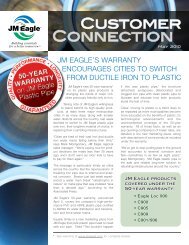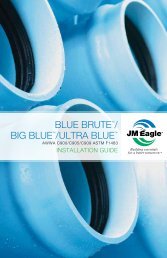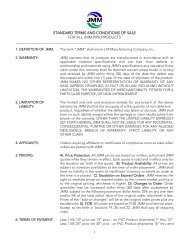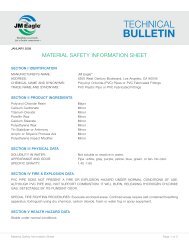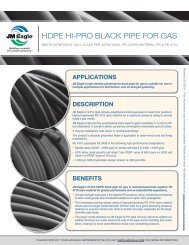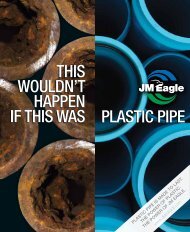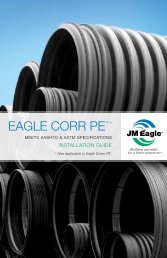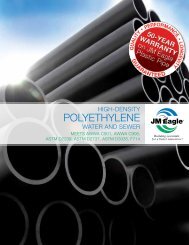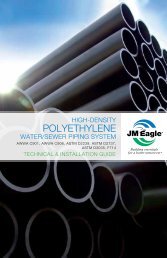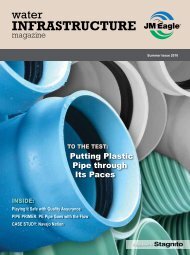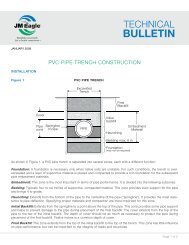I.P.S. Pressure/Irrigation (P.I.P) Installation Guide - JM Eagle
I.P.S. Pressure/Irrigation (P.I.P) Installation Guide - JM Eagle
I.P.S. Pressure/Irrigation (P.I.P) Installation Guide - JM Eagle
You also want an ePaper? Increase the reach of your titles
YUMPU automatically turns print PDFs into web optimized ePapers that Google loves.
NOTICE: Since PVC pipe is a flexible pipe, trench width and shape have little<br />
to no effect on loading experienced by the pipe, since the maximum load<br />
that may be carried by the pipe is that due to the column of soil directly above<br />
the pipe outside diameter. The reason for the trench width recommendations<br />
above are to help installers realize the economies that may result from installation<br />
of PVC pipe over other materials, while maintaining adequate control<br />
over backfilling, compaction and placement to limit long-term deflection.<br />
2.4 Trench Depths<br />
Depth is governed by surface loads, earth loads and frost penetration.<br />
A minimum of 12 inches depth of cover is recommended where frost<br />
penetration need not be considered. Where frost is a factor, pipe should be<br />
buried 6 inches below the greatest recorded frost penetration. If the line will<br />
be drained and not used in winter, frost need not be considered.<br />
Should unusual soil conditions and/or surface loads be anticipated and the<br />
engineer wants to calculate deflection when working with pressure pipes,<br />
“pipe stiffness” (f/ y) can be found in Table 3.<br />
Table 3<br />
PIPE SDR<br />
STIFFNESS<br />
(psi)<br />
PIPE SDR<br />
STIFFNESS<br />
(psi)<br />
64 7 25 129<br />
51 14 21 224<br />
41 28 18 364<br />
35 46 17 437<br />
32.5 57 14 815<br />
26 115<br />
For more information on deflection, see Section 5.1.<br />
IRRIGATION & I.P.S. PRESSURE INSTALLATION GUIDE<br />
17



